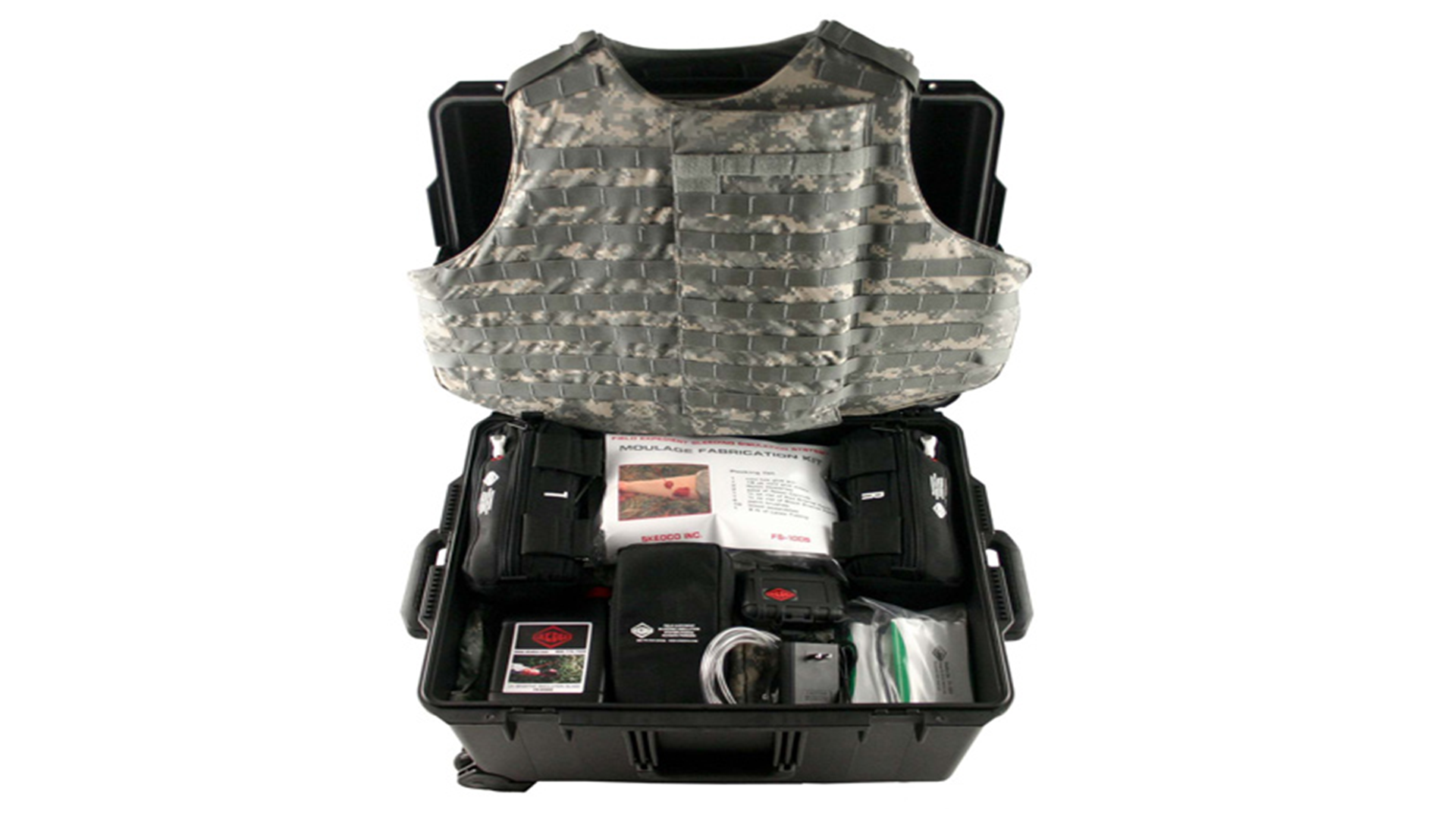
Sara Baragona
What started as an idea of how to make training more realistic for medics has developed into a commercial product used by numerous military and civilian organizations in the United States and abroad.
Effective training of medics is vital, given that a high percentage of fatalities and disabilities result from delays in effective hemorrhage control. Realistic training helps prepare medics for what may be a shocking sight, allowing them to take appropriate action with minimal delay in the line of duty. Preparation can mean the difference between life and death.
Army medics learn to treat wounded warriors during Combat Medic Training at Fort Sam Houston, TX. Then-SGT Lynn Randall King, who has since left the Army, felt that the training tools didn’t sufficiently recreate the stress and difficulty of real-life hemorrhage control in the field. He developed the Field Expedient Bleeding Simulation System (FEBSS) while he was an Army medic trainer at Brooke Army Medical Center (now San Antonio Military Medical Center) to better prepare medics for treatment emergencies involving blood loss on the battlefield. FEBSS simulates several concurrent wounds, either mild or severe, ranging from a nicked vein to a pulsating, hemorrhaging artery.
FEBSS units are suitable for retrofitting typical mannequins, or the systems can be worn by personnel in a role-playing exercise, during which the device is camouflaged under the uniform. The added element of surprise comes into play when, during training and battle simulations, the person becomes “wounded,” screaming and bleeding unexpectedly.
An exclusive patent license agreement to Skedco Inc. allowed the small U.S. business to commercialize the FEBSS Army technology, which was first enhanced under a Cooperative Research and Development Agreement (CRADA) and is now the subject of several U.S. and foreign patents. Both the CRADA and patent agreement were negotiated by the U.S. Army Medical Research and Materiel Command’s Office of Research and Technology Applications.
Since its commercialization in 2008, FEBSS has been purchased and is in use by several military and civilian medic training organizations in the United States and abroad. In 2009, FEBSS was one of 30 products named to the Journal of Emergency Medical Services Hot Products list. Reviewed by emergency medical service providers, the products on the list are deemed to be the most innovative, functional, and potentially life-saving solutions to come to market in the past year.
While statistics have yet to be compiled on how effective FEBSS is during training, there is a documented case of a Soldier who had received training with FEBSS before deploying and was able to react quickly when a fellow Soldier was hit by sniper fire in Iraq. Despite the fact that the Soldier was not a medic, he stopped the bleeding of a femoral artery in time to save his comrade’s life, and he attributed his quick thinking and actions to his training.
In 2010 the president and vice president of Skedco and Army inventor King traveled to Iraq to provide training to combat Soldiers and medics using FEBSS. A trip to Afghanistan to provide training is slated for this summer.
For more information on Skedco, visit http://www.skedco.com.
SARA BARAGONA is a GDIT employee providing service to the U.S. Army Medical
Research and Materiel Command’s Office of Research and Technology Applications. She holds a B.A. in communications and an M.B.A. both from Mount St. Mary’s University.







